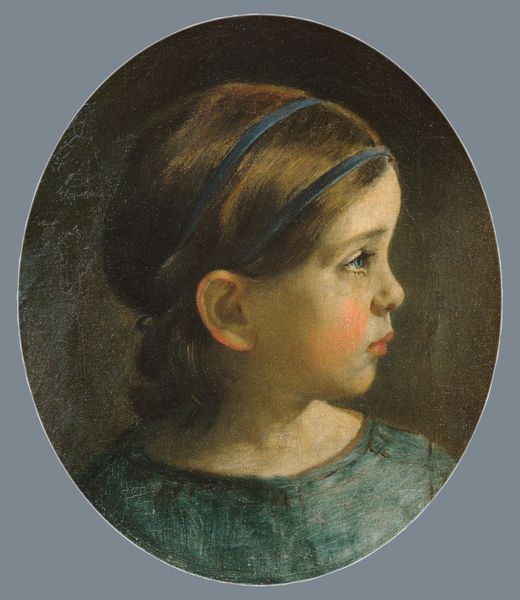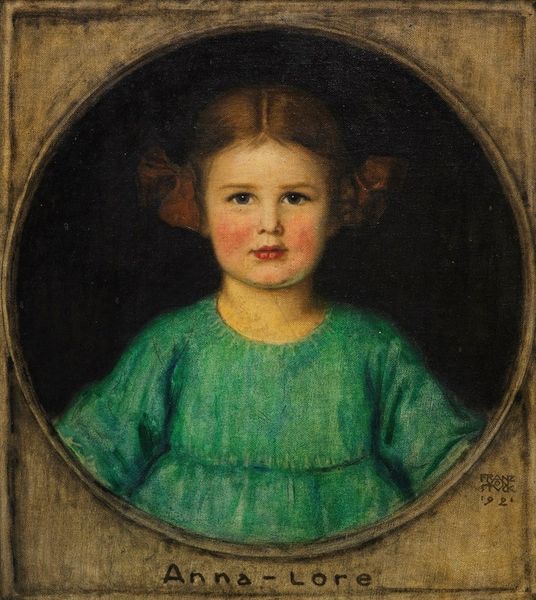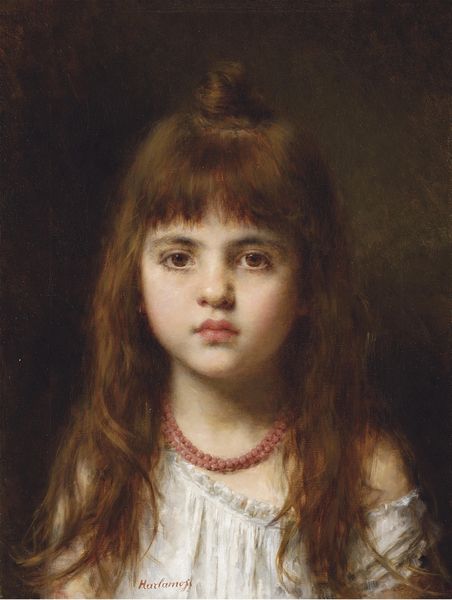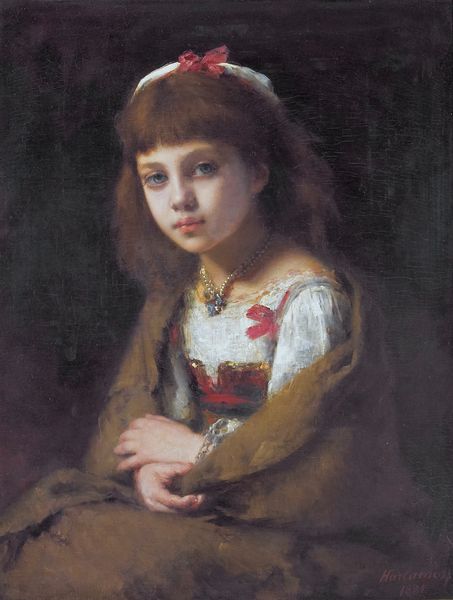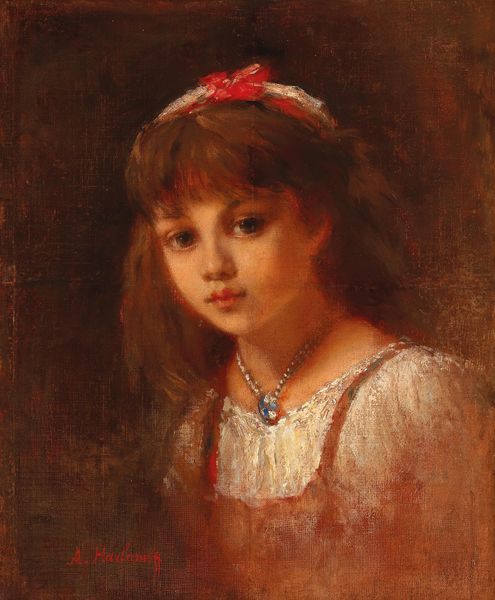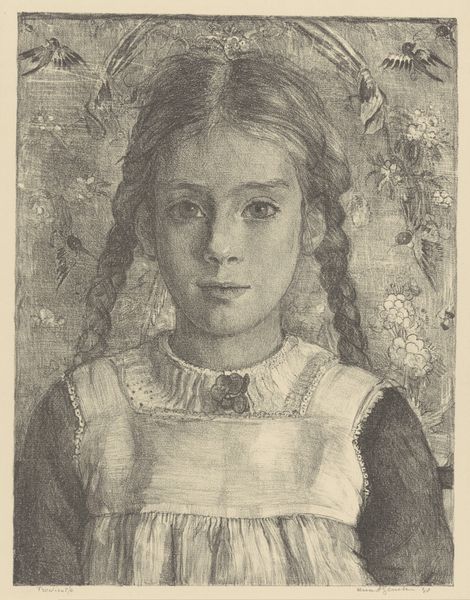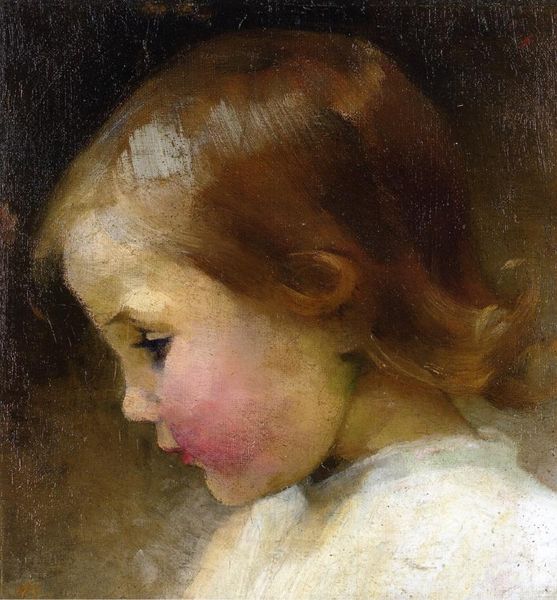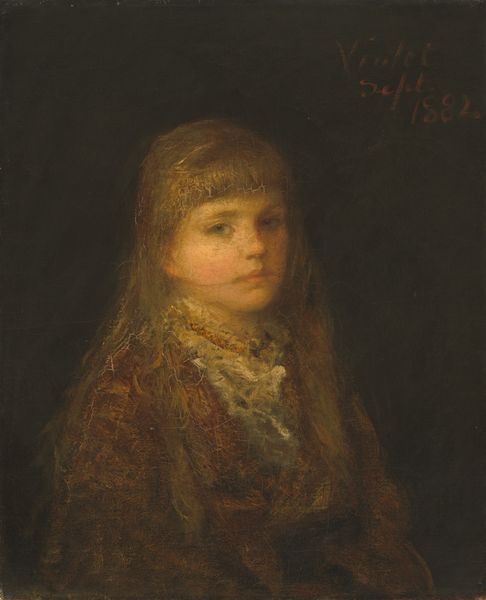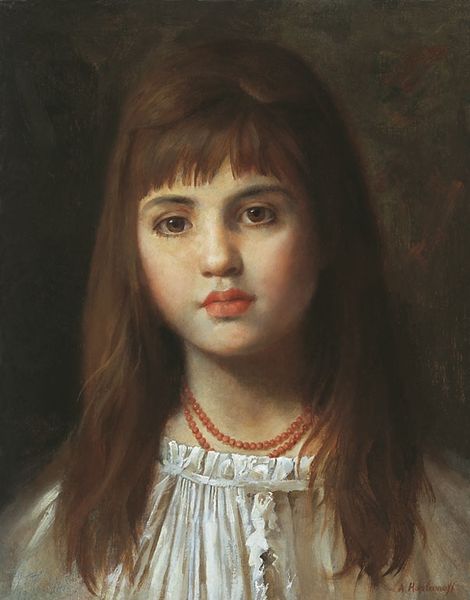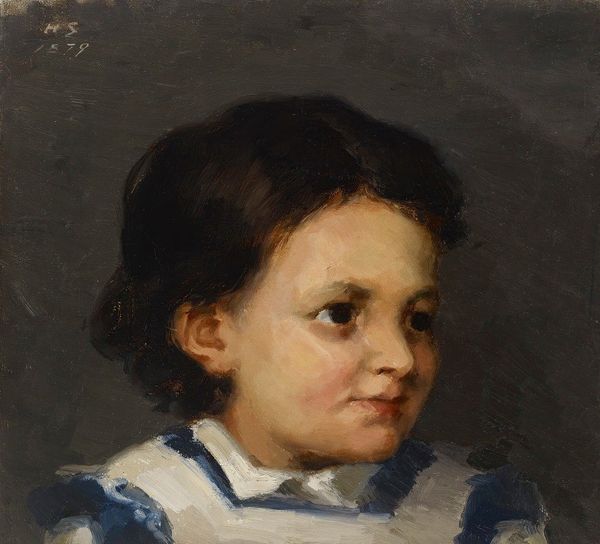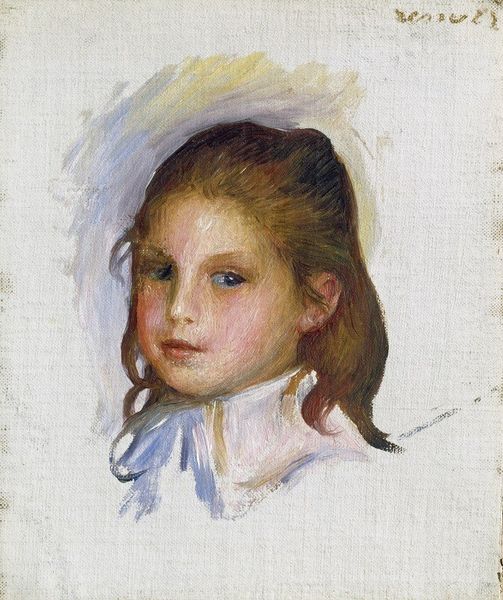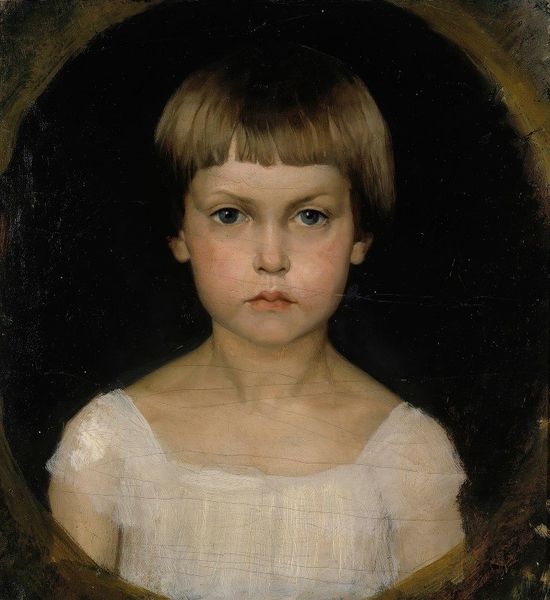
Daughter of William Page (Possibly Anne Page) 1834 - 1838
0:00
0:00
oil-paint
#
portrait
#
oil-paint
#
figuration
#
oil painting
#
romanticism
#
academic-art
Dimensions: Oval: 14 x 12 in. (35.6 x 30.5 cm)
Copyright: Public Domain
Editor: This is “Daughter of William Page (Possibly Anne Page)," an oil painting by William Page, dating back to 1834-1838. It's striking how the artist captured such innocence, yet there's a melancholy in her eyes. What draws your eye when you look at this portrait? Curator: That melancholy, yes, I feel it too. It's a powerful undercurrent in much of Romantic portraiture. But, stepping back, I see the echoes of the Old Masters bouncing around here— the sfumato, that smokey haziness around the edges, reminiscent of Leonardo, and those rich, earthy tones hinting at Titian's influence. Notice how Page uses the warm red background to push the subject forward. It’s almost like she's stepping out of the canvas, isn't it? I wonder, does her gaze make you feel as though she’s searching for something? Editor: Definitely, she seems to be peering into another world! Was it common for artists to paint their own children at the time? Curator: Painting one’s children was popular because it allowed for artistic practice coupled with an intimate subject matter that conveyed personal significance and family legacy, aligning with societal values. William Page really focused on capturing emotions and personalities with incredible technique and a distinctive flair that blends observation and sensitivity in representing the girl. There is also a bit of "perfecting" to meet artistic conventions as well as reflect positively on the sitter's family. Do you see that contrast, that tension perhaps, between naturalism and idealization? Editor: Now that you point it out, yes, I see how she's been idealized and it clashes with the feeling of melancholic realness. Curator: Precisely! It makes me ponder, what were the societal expectations for young girls during that era, and how does Page navigate portraying those complexities within the constraints of Romanticism? A true artist's riddle. Editor: So much to think about! I definitely see more than just a simple portrait now; it’s a window into a specific time, full of conflicting feelings and conventions. Curator: It just goes to show, sometimes the most compelling art is found in those quiet, contemplative spaces between the seen and the unseen.
Comments
No comments
Be the first to comment and join the conversation on the ultimate creative platform.
